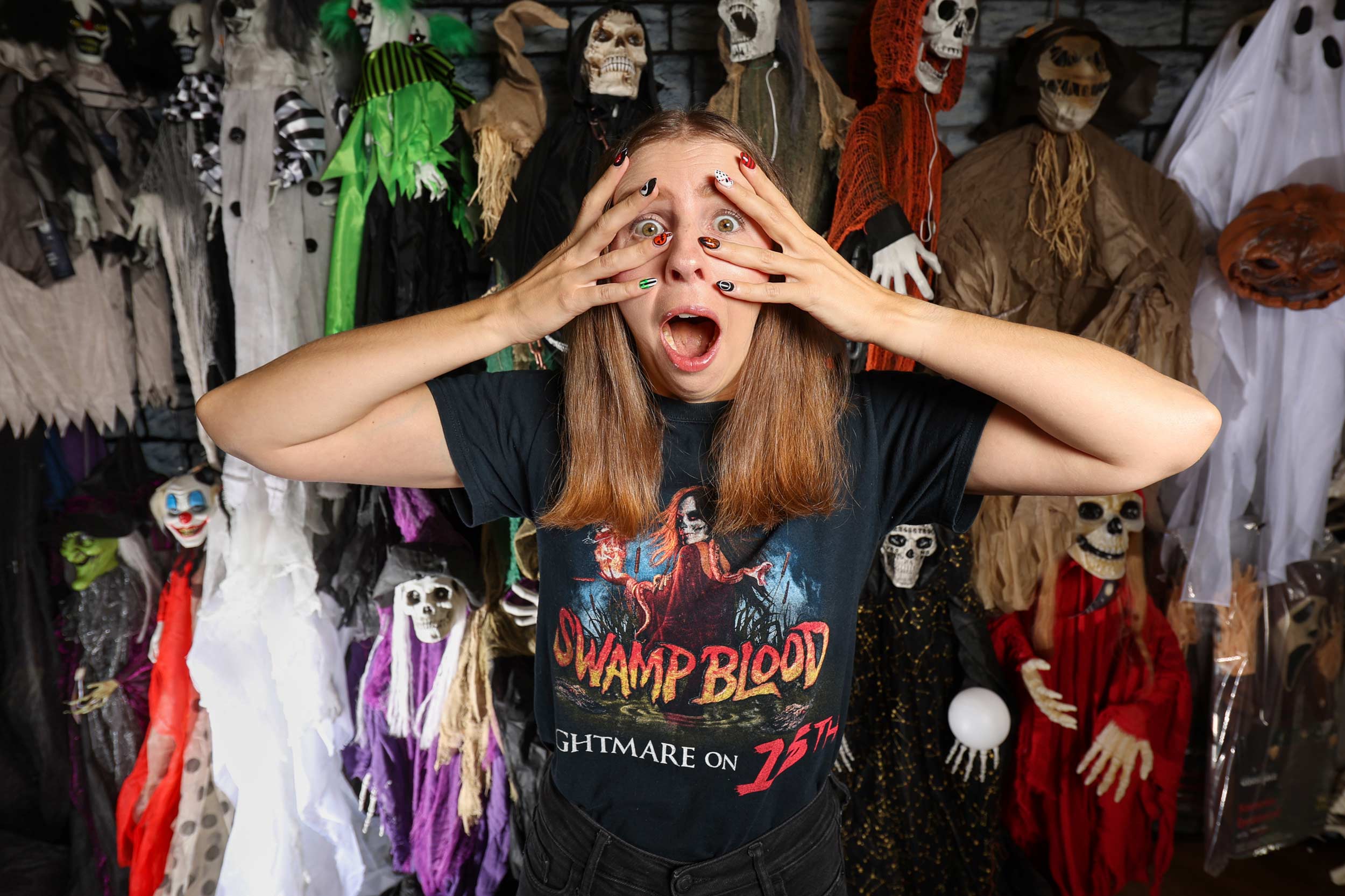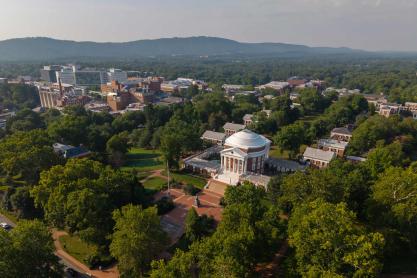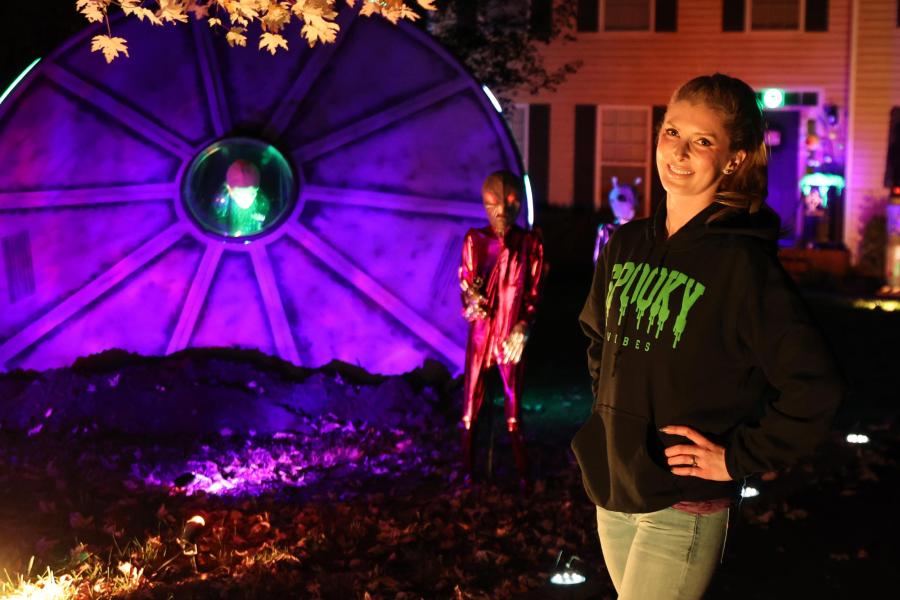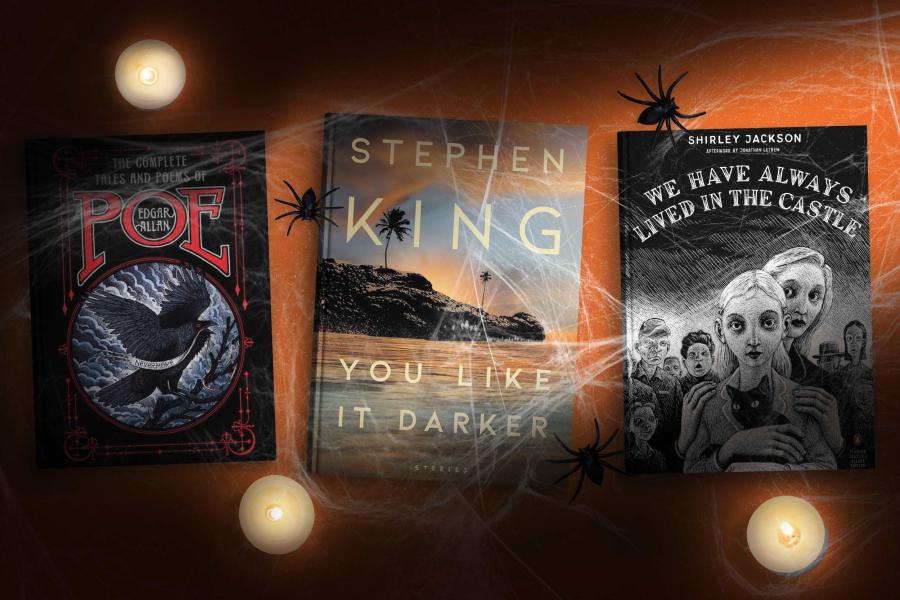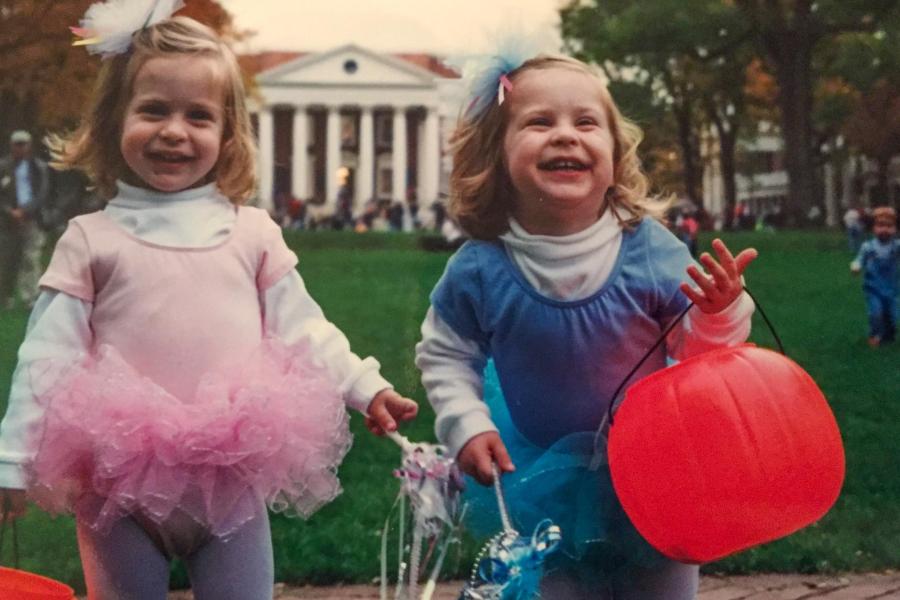Why we love getting spooked: The psychology of Halloween
Crisp fall air and crystalline skies have arrived in Central Virginia. The leaves are changing and Halloween is just weeks away.
With that comes a familiar itch for many people: getting in their frights. That made us at UVA Today wonder why so many people love being scared.
University of Virginia psychology doctoral candidate Natasha Bailey is one of those people. She grew up in Salt Lake City, Utah, and worked at the state’s No. 1 scariest haunted house, Nightmare on 13th, playing Samara from the supernatural horror film “The Ring,” an old hag and a clown.
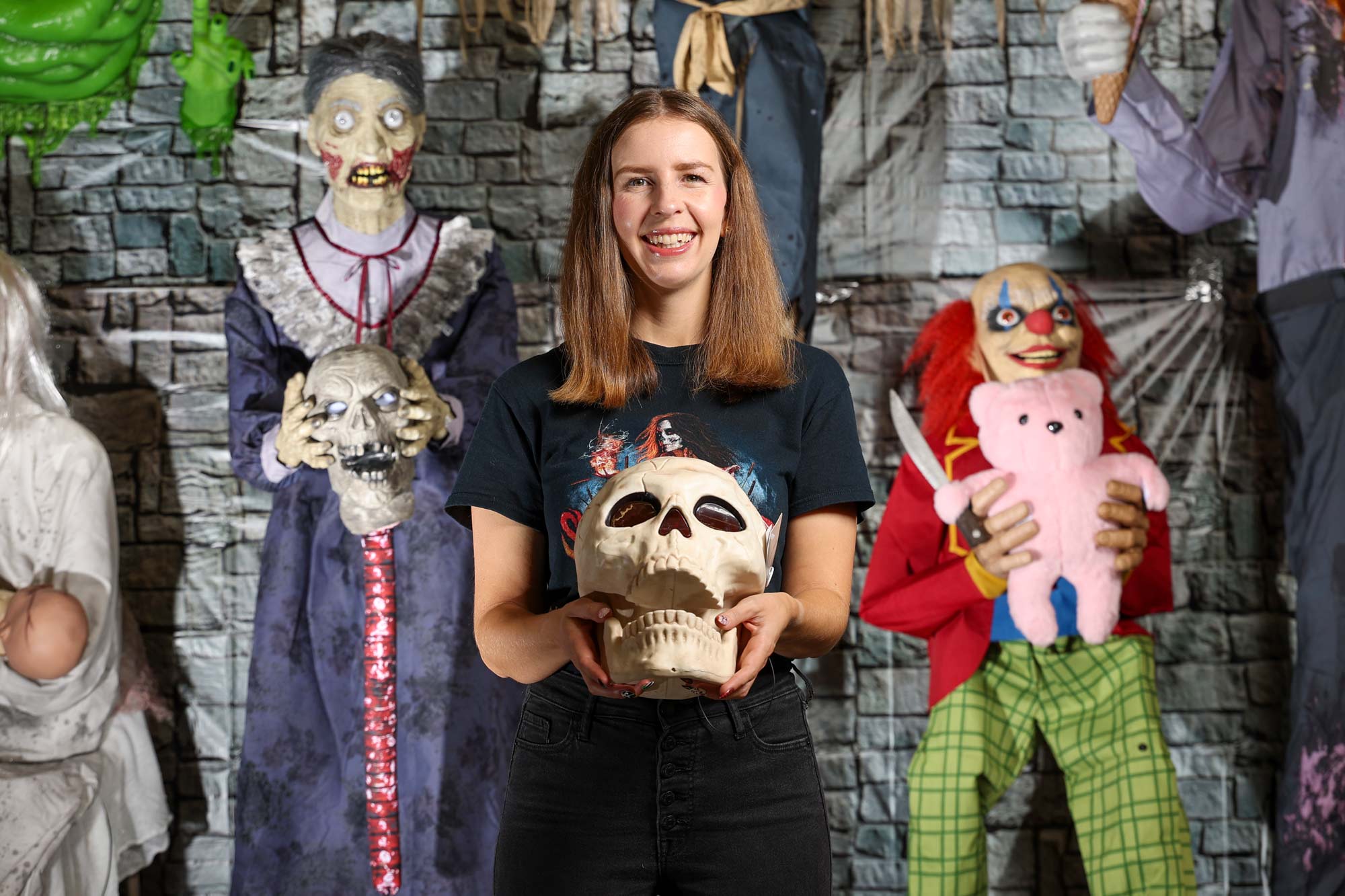
“My all-time favorite (movie) is ‘Nightmare on Elm Street,’” she said. (Photo by Matt Riley, University Communications)
She’s also treated patients who are trying to conquer their fears. It’s a one-two punch making her uniquely suited to talk about why some people seek out fear-inducing experiences, especially this time of year.
“For some people, when they go through a haunted house or watch a scary movie, they get to this heightened physiological arousal state, and for some people, that sensation is pleasing. There’s a rush or a buzz that comes from those physiological changes,” she said.
Conversely, people who have high levels of anxiety tend not to enjoy being scared.
“There’s also this sensation-seeking component,” Baily added. “So, people who either have a lower physiological arousal baseline or stronger reward responses to stimulation, these are known as ‘sensation seekers’ and they like to seek out experiences that boost their arousal to that more optimal heightened level.”
What haunted houses and scary movies strive to do is get people to “this optimal physiological arousal state where you’re not too aroused, but also not too under-aroused,” Baily said.
Surprisingly, people can experience a feeling of safety in haunted houses because they are in a controlled environment. “That’s part of what makes them fun for people. It’s a safe environment to sort of test out those limits, to test getting to that optimal arousal state,” she said.
Fear can also have an upside. In a controlled environment, it can help people learn how to respond to a threat. “So again, when we’re in that optimal arousal state, our fight-or-flight system is really working the way it’s supposed to, to help us neutralize the threat and respond appropriately,” she said.
Consider the pitch-black basement scene in 2013’s “The Conjuring,” when a pair of ghostly hands clap behind the protagonist. Jump scares like that, Baily said, are particularly good at getting people in that feel-good, spooky zone.
The amygdala, an almond-shaped structure deep in the brain, is the hotbed for emotions like fear and anger, detecting threats and signaling potential danger. “Then that allows for our immediate startle reactions,” Baily said. “The next component where the amygdala also initiates the fear response is it triggers physiological arousal symptoms, with the increased heart rate, the sweating and cortisol release.”
Sitting in a packed movie theater watching a scary movie with a crowd of people can be especially thrilling.
“Fear, especially this time of year with haunted houses and scary movies, is such a social bonding experience,” Baily said. “We’re enjoying that fear response together. That makes it a more positive experience. Humans are wired for social connection.”
Media Contact
University News Senior Associate Office of University Communications
jak4g@virginia.edu (434) 243-9935
Article Information
October 10, 2025
